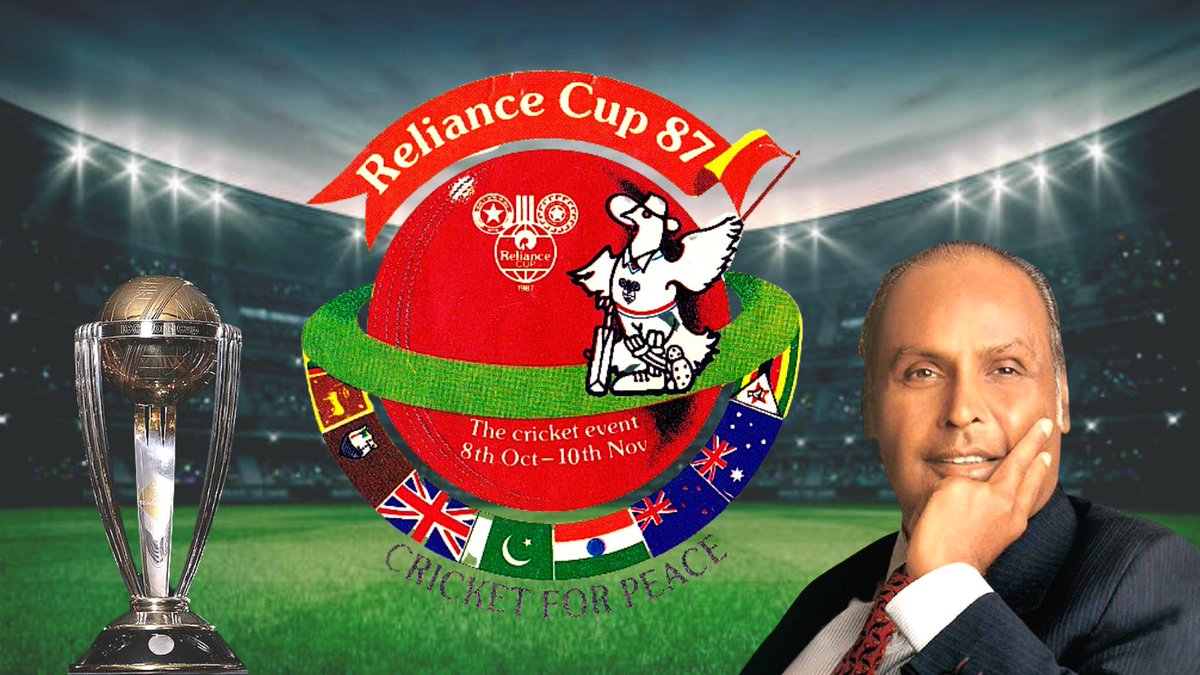In 1987, the cost of organizing the Cricket World Cup was a staggering 30 crore rupees, a considerable amount for that era. During that time, India was grappling with political and economic crises, and the task of co-hosting the event with Pakistan was a daunting one. The article discusses how the tournament came to be known as the Reliance Cup and the pivotal role played by various individuals and entities, particularly Reliance Industries.

Indira Gandhi, the Prime Minister of India, had passed away in 1984, and the country was facing multiple challenges. Securing a significant sponsor for the 1987 Cricket World Cup was a formidable task. The Indian Cricket Association, with limited financial resources, attempted to raise money through advertising and sponsorship but fell short of the required 4 crore rupees, managing only 38 lakh rupees.
Desperate to ensure the success of the World Cup and India’s emergence as a cricketing superpower, the organization’s president turned to Rajiv Gandhi, the then Prime Minister of India, for assistance. Rajiv Gandhi recognized the importance of hosting the event and agreed to provide the remaining funds.
At this critical juncture, a remarkable turn of events unfolded. Reliance Industries, headed by Ambani, stepped in to sponsor the tournament. The name “Reliance” began to appear prominently in various aspects of the World Cup, significantly boosting the company’s brand recognition.
Reliance Industries played a crucial role throughout the event, and as a result, the tournament was renamed the Reliance Cup 1987. Ambani’s substantial financial contribution helped successfully brand the company on a global scale. Through the 1987 World Cup, Reliance introduced its name to the world, marking a significant milestone in the company’s history.
India’s preparation for the event involved the construction of 14 stadiums to host the matches. The successful hosting of the 1987 World Cup was a pivotal moment in cricket’s history, signaling a shift in power away from England and showcasing India’s potential as a cricketing superpower. It demonstrated India’s ability to organize a major international sporting event from the ground up.
Leave a Reply